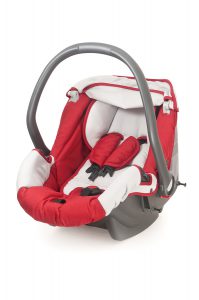7 Most Common Car Seat Mistakes
 Michael Babboni
Car Accidents
Personal Injury
Despite what you may think, car seat safety isn't child's play. It is all too easy to make a mistake that could cost the safety of your child. That is why we have a list of the most common mistakes for you to avoid when it comes to car seat safety.
Michael Babboni
Car Accidents
Personal Injury
Despite what you may think, car seat safety isn't child's play. It is all too easy to make a mistake that could cost the safety of your child. That is why we have a list of the most common mistakes for you to avoid when it comes to car seat safety.1 Getting A Used Car Seat Without Researching First
Not everyone has the money to afford a brand new car seat for their child. Though there is nothing wrong with that, you need to make sure you check a few things before you purchase a used one. So before you make that purchase check to see if this car seat:
- Comes with instructions or has a label showing the manufacture date and model number
- Hasn't been recalled
- Isn't expired or more than 6 years old
- Has no visible damage or is missing pieces
- Has never been in a moderate or severe crash
If you are unable to find any of these, you shouldn't be using it for your child.
2 Using The Car Seat As A Replacement Crib
A car seat is designed to protect your infant or child during travel, not as a crib. In a 2009 study, infants that were often seated in an upright position lead to a compressed chest and obstructed their ability to breathe properly.
Sitting in a car seat for lengthy periods of time can also contribute to the development of a flat spot on the back of the baby's head and worsen gastroesophageal reflux disease.
3 Putting The Car Seat In The Wrong Spot
The safest area for your child's car seat is in the back seat and away from active air bags. It is best if seated in the center seat if possible in order to minimize the risk of injury from the doors during an accident.
If the car seat is placed in the front, activated air bags will end up hitting the child's head and cause a serious or fatal injury. If it is necessary for a child to travel in the front seat, make sure to deactivate air bags or to install a power switch that will prevent their deployment during a crash.
4 Incorrectly Installing The Car Seat
Before installing a car seat, you should always read the manufacturer's instructions. Different car seats work different ways and you need to ensure that your able to properly use it. Once you've got it in, make sure it is secured tightly to the seat. There should be no more than 1 inch of movement from side to side or front to back.
5 Reclining Your Infant Or Child At The Incorrect Angle
For the rear-facing position, make sure to recline your car seat according to the manufacturer's instructions to ensure that your infant or child's head doesn't flop forward. Often seats include angle indicators or adjusters that can be maneuvered.
6 Moving Too Soon To A Forward-Facing Car Seat
You may find it hard to resist the urge to see their smiling face from your rear view mirror, but you must. Rear-facing is recommended until the child reaches the age of 2 years old or is at least 35 pounds. Though it can be frustrating, your child's safety needs to come first.
7 Wearing Bulky Outerwear In The Car Seat
Harness straps are often not made with bulky outerwear in mind. If it's cold, dress them in a light jacket and hat. After you've buckled them in snugly, tuck them in with a cozy blanket to keep them warm. Save the outerwear for when they are outside.
